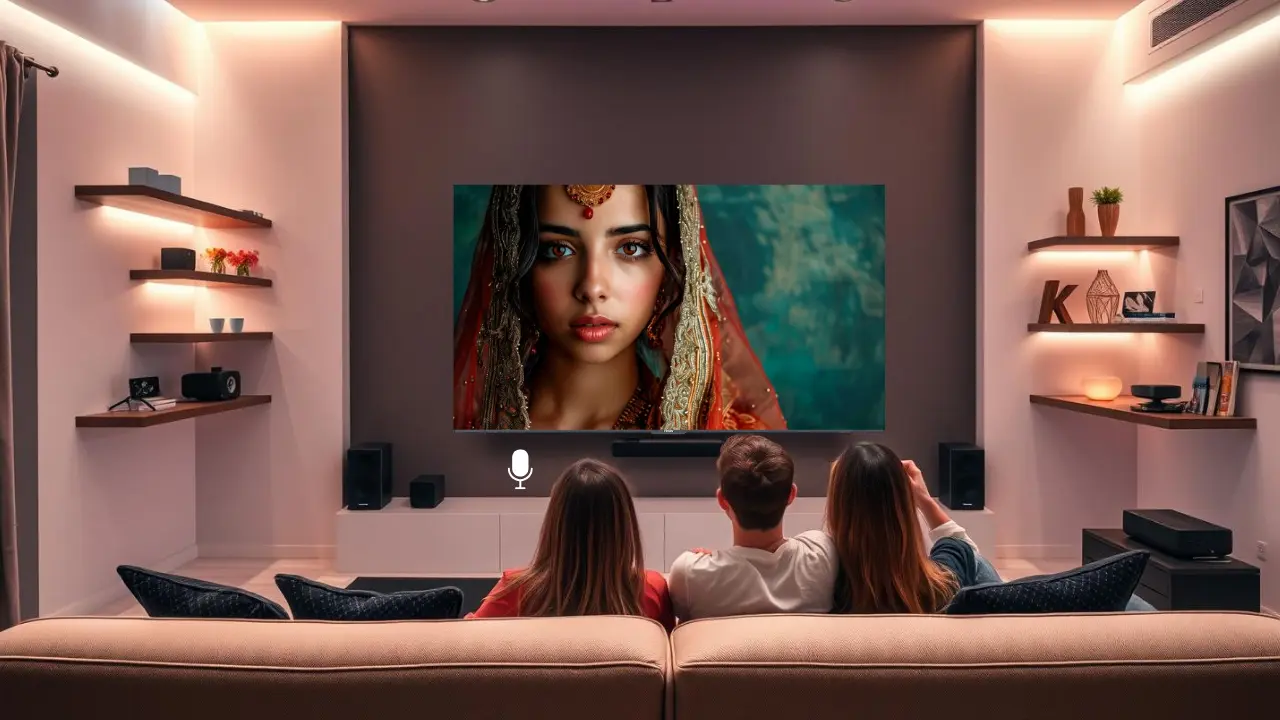So, you’ve got a smart TV, and you’re probably wondering how to make it even smarter. One of the coolest tricks up its sleeve is voice control.
This article will walk you through exactly how to set it up and start using your voice to manage your entertainment.
Think of it: no more fumbling for the remote. With a few simple steps, you can be changing channels, adjusting the volume, and even launching apps just by speaking. It’s all about making your viewing experience more convenient and hands-free.
Ready to dive in? We’ll cover connecting a voice assistant to your TV and explore the range of commands that will put you in complete vocal control. Let’s get started and unlock this awesome feature of your smart TV.
What Are Voice Assistants and How Do They Work?
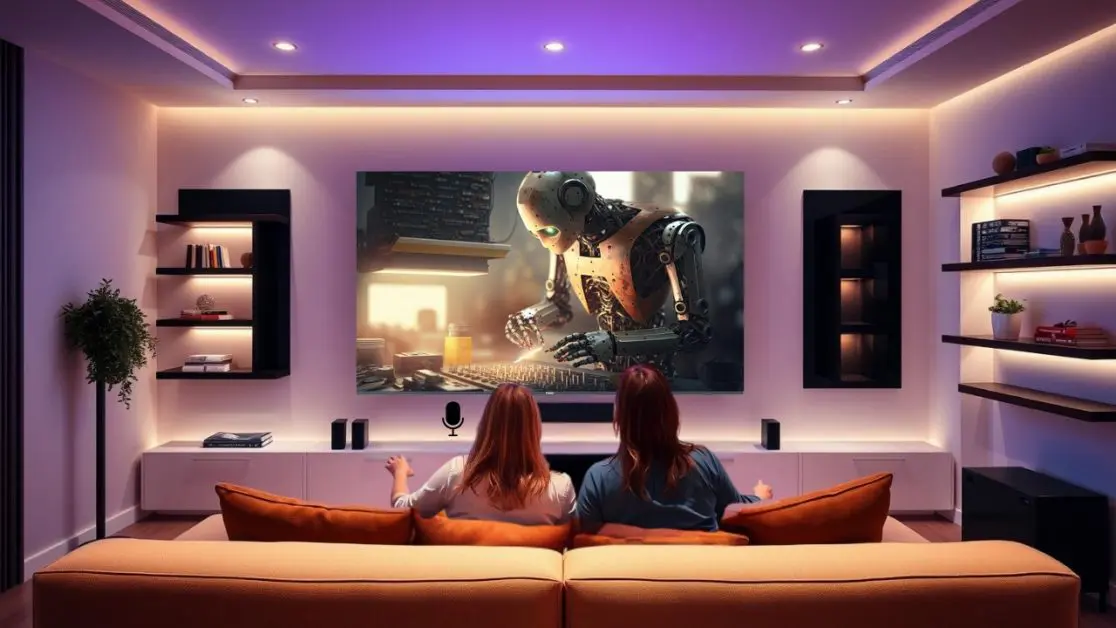
Voice assistants are AI-managed devices that answer to voice commands. They can answer questions, create calendar events, and, most relevant, operate devices like TVs. Examples of widely used ones are Google Assistant and Amazon Alexa.
Here’s the typical process:
- Wake word activation: You start with a command like, “Hey Google”
- Voice recognition: The assistant processes and captures your voice.
- Execution: Your command, asking to turn on the TV or play a specific show, is translated into an action by the assistant.
Smart TV voice control works similarly but uses built-in microphones or smart speakers connected to the same network.
4 Benefits of Voice Control for Smart TVs
There are various reasons for the growing acceptance of voice control for televisions. Here is a simple summary of the major advantages:
| Benefit | What This Means for You |
| Hands-free control | No more searching for the remote; speak instead. |
| Faster navigation | Apps and inputs are accessed instantly. |
| Accessibility | Great for users with limited movement. |
| Multi-device control | Allows for managing the TV with other smart home devices. |
| Enhanced convenience | Volume control or launching Netflix is even more effortless. |
How to Set Up Voice Control on a Smart TV

Using commands to navigate through your TV will only be possible after setting up the TV to work with a voice assistant. Depending on the brand of TV and the assistant to be used, the steps may vary a little; however, the flow is generally the same:
1. TV Compatibility Check
Ensure your Smart TV has voice command features. Most of the new Smart televisions have built-in voice assistants or are compatible with smart speakers.
2. Your Chosen Assistant
If your smartphone and other smart devices use Google , then it is easier to stay within that ecosystem for a more integrated experience that’s tailored to you. Select the one that fits best.
3. Same Wi-Fi Connection on Devices
Ensures instant communication between the devices in question. Maintaining the same Wi-Fi connection allows for real-time interaction between your voice assistant and Smart TV.
4. Voice Control from TV Settings
Sign in to your assistant’s account if necessary. Go to the general settings and enable the TV voice commands from there. Manage the “Device Preferences” section, routing to “Smart Features.”
Common Voice Commands You Can Try Using
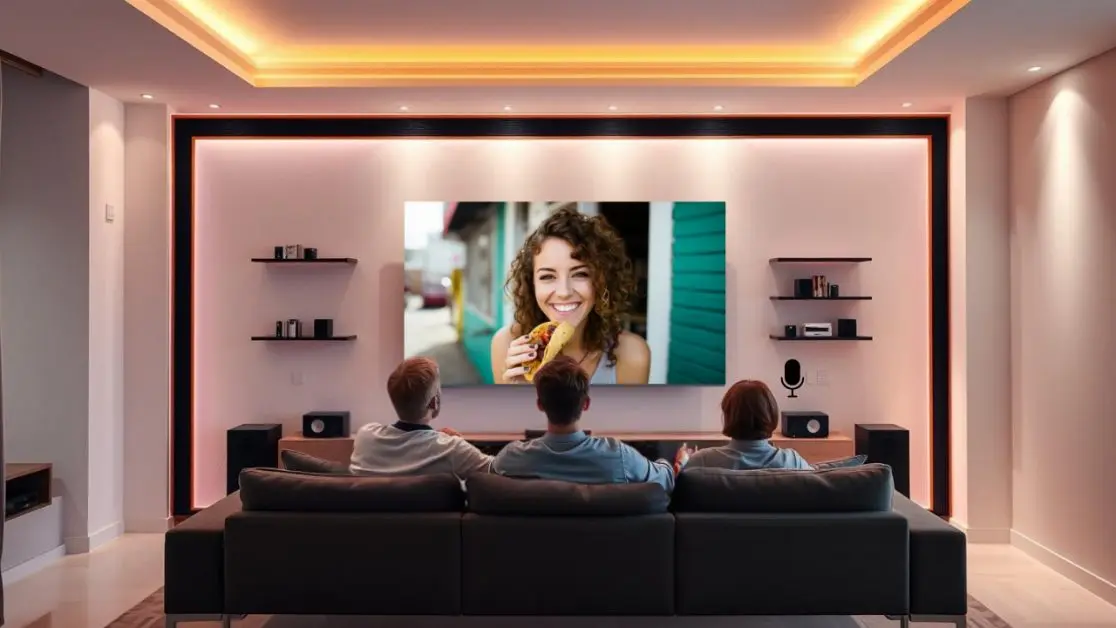
After finishing the setup, the use of voice commands becomes easier. Here are some you can try:
Basic Controls:
- “Power on the TV”
- “Put the volume up”
- “Silence the sound”
- “Change to HDMI 2”
Content Navigation:
- “Show me Netflix with Money Heist”
- “Look for action films”
- “Launch YouTube”
- “Continue the previous show.”
Smart Home Integration:
- “Lights in the living room dimmed.”
- “What is the forecast?”
- “Display my doorbell camera.”
Most people would be surprised to learn that Smart TVs with voice assistant capabilities come equipped with a lot more features than what meets the eye. These commands can help utilize some of those buried tips.
Best Practices to Enhance the Voice Control Experience
Even after setup, there are ways to enhance the recognition and functionality of your voice assistant:
1. Use Clear, Simple Commands
Use plain, short phrases that pack an action-oriented punch. Avoid speeding through the phrases.
2. Rethink Where You Place the Microphone
If the TV or the remote has a built-in microphone, face it. If the device is a smart speaker, it has to be within earshot for the user to speak freely.
3. Arrange Devices to Enhance Phrasal Control
Using the assistant’s application, you can organize device bundles such as ‘Living Room,’ and then you can say “Switch off the TV in the living room,” and the assistant will be able to understand.
4. Keep Software Updated
Smart TV updates will usually add new voice-related features. Be on the lookout for any voice-related firmware updates.
The Voice Features of Smart TVs and Its Software
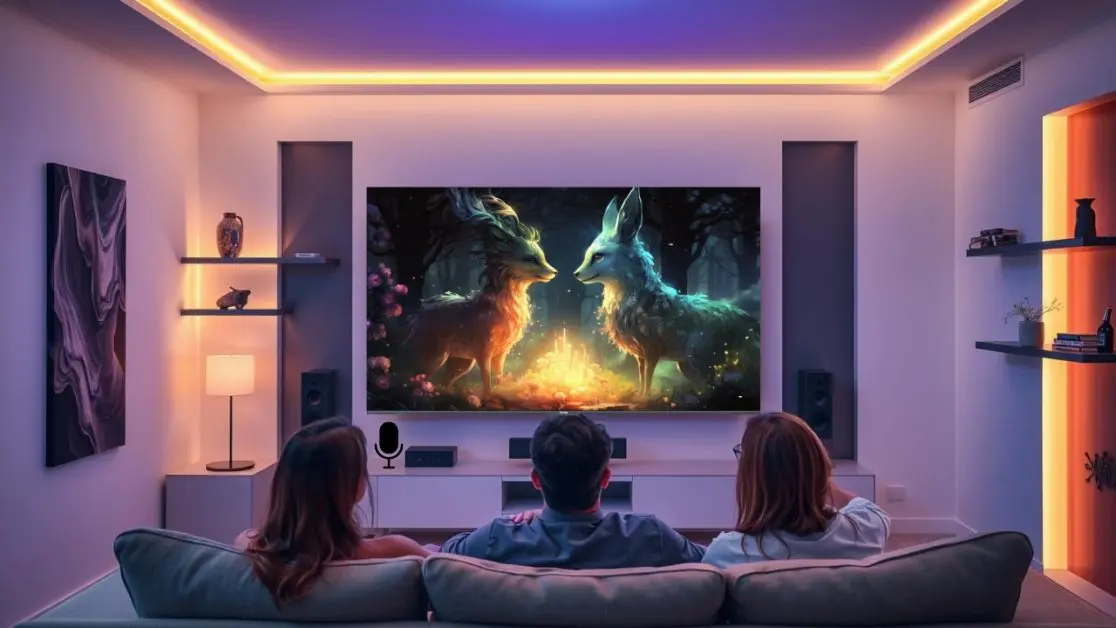
Voice control depends on a lot of logical features televisions traditionally have, and some modern in-development TVs have remodeled remotes’ voice boards, allowing for voice-assistant integrated buttons.
Smart TVs may come with:
- Far-field microphones: These let customers issue commands remotely.
- Rapid Respond technology: Able to respond to voice commands while powered off.
All these features help get rid of lag when using voice commands.
Remote or voice assistant—both serve their purpose depending on the situation.
So, let’s cut to it: voice control is for ease of use while the remote is useful for tasks such as content searching and navigating through menus.
Voice Command vs Remote
- Hands-free: Can provide a command without lifting a finger.
- Simpler user tasks: Can serve lower-level tasks.
- Advanced menu navigation: Users bypass advanced menus effortlessly.
- Information control: Must not engage in the command.
- Content search: Voice-based searching for material.
The balance needs a switch: requires both solutions. Sentence structure filters voice commands for basic commands while the remote guides through precise tasks. This innovation doesn’t signify the end of the remote’s usefulness. Instead, it shifts the logic behind optimizing the television experience.
What Are the Safety Precautions When Using Voice Assistants?
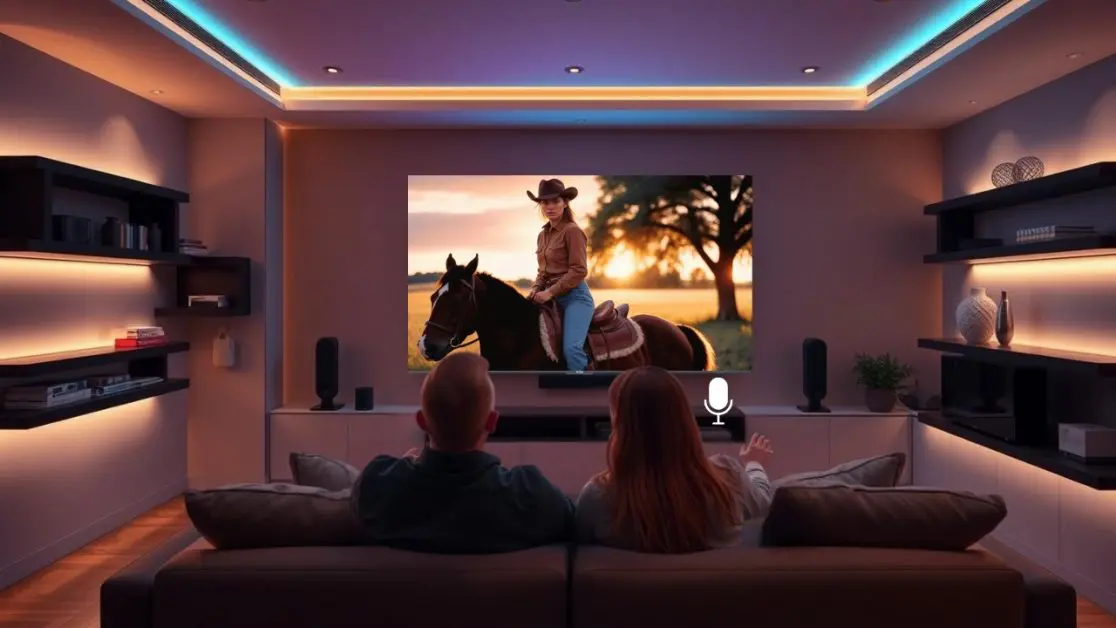
The use of voice-activated devices raises security issues. However, most Smart TVs and voice modulators have the following configurations:
- Enable the microphone mute when not needed.
- Control information that can be accessed through the app.
- Access and erase voice recordings.
- Always try to bring up the privacy settings and calibrate them to your liking.
About What Might Come Next Regarding the Voice-Activated TV Technology
Trust that voice technology will evolve even further. So, expect future Smart TVs to come with:
- Enable instructions throughout the discourse (no need to use preset phrases).
- Control of other gadgets through the TV.
- Advanced tailor-made recommendation systems triggered by the user’s voice.
AI has the potential to become smarter every day, thus everything will be controlled by voice commands. The AI pinnacle will be when it becomes the command center for the house.
Wrapping Up
People’s content consumption has radically evolved alongside the introduction of Smart TVs, but the addition of voice assistants makes the experience even smoother. Voice commands elevate thumbs-free separation from remotes, control around the house, and feature a blend of ease with a dash of magic.
Knowing how to work with Smart TVs makes it easier to access more content and do less work. And in the case where the target is a fully connected home, starting with voice-controlled TVs will make the first step go very smoothly.
Want to buy a Smart TV with voice control features that come fully built-in?
Check out Haier India’s new line-up of Smart AI TVs, which are specifically designed for effortless commanding, hands-free use, and high-quality watching to suit the needs of the household.

